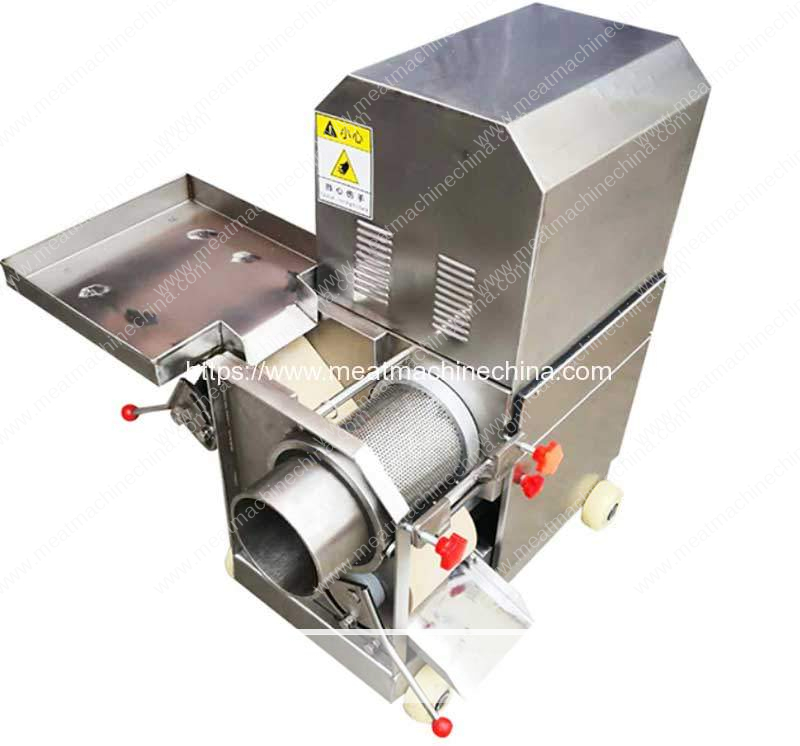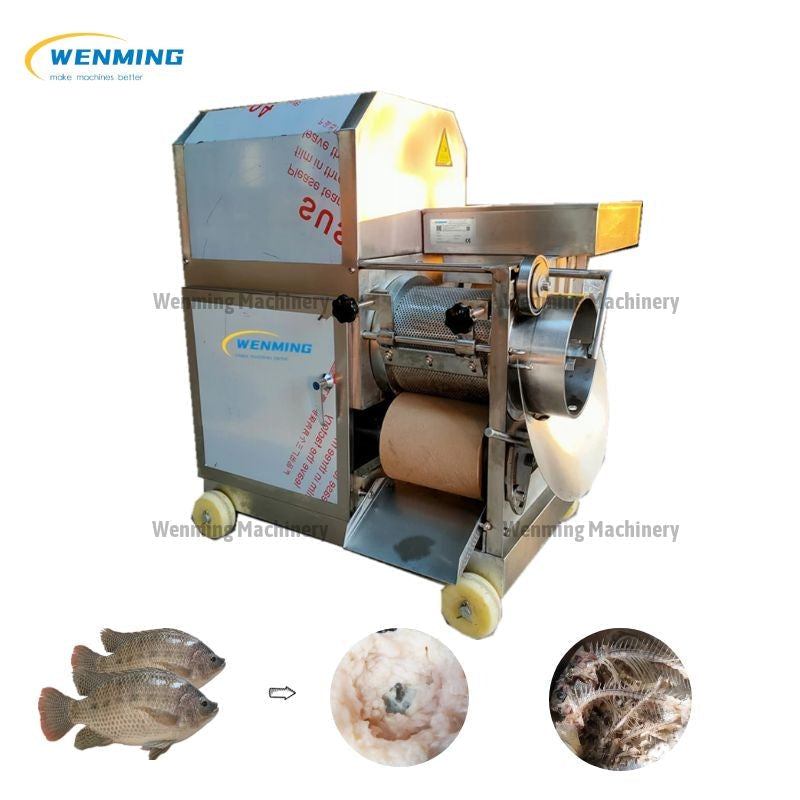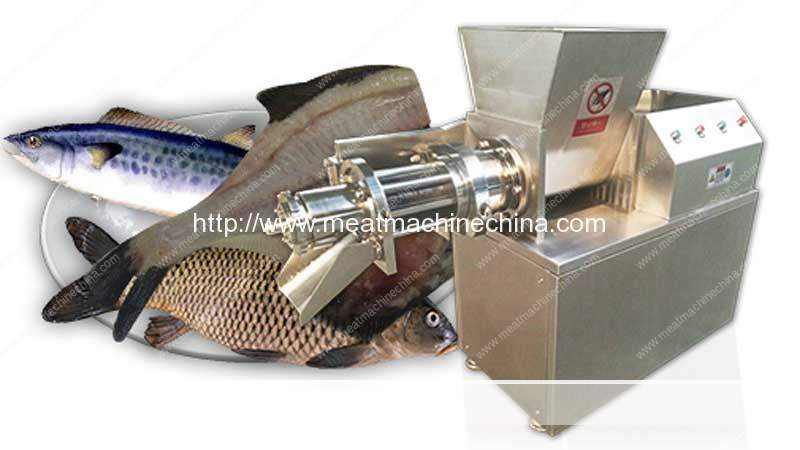10 years of experience as a food machinery equipment manufacturer
10 years of experience as a food machinery equipment manufacturer
The global demand for seafood products continues to rise, driven by increasing awareness of their nutritional benefits and a growing population. Within the seafood processing industry, efficiency, product quality, and resource maximization are paramount. A significant technological advancement that addresses these needs is the fish bone separator, often referred to as a fish deboning machine. This equipment plays a crucial role in modern fish processing, automating a task that was traditionally manual, labor-intensive, and prone to inconsistencies.

A fish bone separator is a specialized piece of machinery designed to efficiently separate fish flesh from bones, skin, fins, and scales. The core purpose of this equipment is to recover a high yield of pure fish meat, which can then be used in a wide array of food products. Before the advent of these machines, deboning was primarily done by hand, a process that is not only slow and costly but also results in considerable wastage of valuable fish meat and can pose challenges in maintaining consistent product quality, especially concerning the complete removal of small bones.
The operational principle of most fish bone separators is based on mechanical pressure and filtration. Key components typically include:
As fish are fed into the machine, they are conveyed between the rotating perforated drum and the pressing belt. The applied pressure squeezes the soft fish flesh through the small holes of the drum. The bones, skin, and fins, being more rigid and generally larger than the perforations, cannot pass through and are instead carried along the outer surface of the drum. This waste material is then typically scraped off by a blade or scraper mechanism and discharged separately. The deboned fish meat, now in a minced form, is collected from the inside of the drum, often via a chute or an integrated conveyor system, ready for further processing or packaging.
The adoption of fish bone separators in seafood processing facilities offers a multitude of benefits:
Increased Efficiency and Throughput: Compared to manual deboning, these machines can process significantly larger quantities of fish in a much shorter time. This high throughput is essential for commercial operations looking to scale production and meet market demands effectively.
Optimized Meat Yield: Mechanical separation is generally more effective at recovering meat that would be difficult or impossible to retrieve through manual deboning, especially meat adhering closely to the bone structure. This leads to a higher yield of usable fish flesh, reducing waste and improving the overall economic viability of the processing operation.
Reduced Labor Costs: Automation of the deboning process significantly lessens the reliance on manual labor. While skilled operators are still needed to run and maintain the machinery, the overall labor requirement per unit of fish processed is substantially lower. This translates into considerable savings in labor costs and allows for the reallocation of human resources to other value-adding tasks.
Enhanced Product Quality and Consistency: Fish bone separators can produce a minced fish product with a more consistent texture and a significantly lower incidence of residual bones compared to manual methods, provided the machine is correctly calibrated and maintained. This consistency is crucial for consumer satisfaction and for the production of uniform downstream products like fish balls, patties, or surimi.
Versatility: Many models of fish bone separators are versatile enough to handle various types of fish, including small pelagic fish, larger demersal species, and even fish trimmings from filleting lines. Adjustments to pressure settings or changing the perforated drum can often adapt the machine for different raw materials.
Improved Hygiene and Safety: Modern fish bone separators are typically constructed from food-grade stainless steel, which is easy to clean and sanitize, thereby minimizing the risk of microbial contamination. The enclosed nature of the process also reduces direct human contact with the product, further enhancing food safety. Additionally, it reduces the ergonomic strain and risk of injury associated with repetitive manual deboning tasks.

Fish bone separators are integral to various segments of the seafood processing industry:
When selecting a fish bone separator, several factors should be considered to ensure the chosen equipment meets the specific needs of the processing facility:
Processing Capacity: The machine’s throughput (usually measured in kilograms per hour) should align with the facility’s production volume requirements.
Material of Construction: Food-grade stainless steel (e.g., SUS304 or SUS316) is preferred for all parts in contact with the fish product due to its durability, corrosion resistance, and ease of cleaning.
Suitability for Fish Type: The machine should be capable of efficiently processing the specific types and sizes of fish that the facility handles. This may involve considering the perforation size of the drum and the pressure adjustment range.
Ease of Operation, Cleaning, and Maintenance: A machine with a user-friendly design that allows for straightforward operation, quick disassembly for thorough cleaning, and easy access for maintenance will contribute to overall operational efficiency and hygiene.
Yield and Quality of Separated Meat: It is important to assess the machine’s ability to maximize meat recovery while maintaining the desired texture and minimizing bone content in the final product.
Footprint and Integration: The physical size of the machine and its compatibility with existing processing lines are practical considerations for installation.
The fish bone separator has fundamentally transformed fish processing operations worldwide. By automating a critical and challenging step, it has enabled processors to enhance productivity, improve product quality, reduce waste, and lower operational costs. This technology has also facilitated the development of a wider range of value-added fish products, making seafood more accessible and convenient for consumers. As the seafood industry continues to evolve, driven by sustainability concerns and increasing consumer expectations, the role of efficient and effective processing technologies like the fish bone separator will only become more significant. These machines contribute not only to economic efficiency but also to better resource utilization, an increasingly important aspect of responsible food production.
In conclusion, the fish bone separator stands as a testament to innovation in food processing technology. Its ability to efficiently and hygienically separate fish meat from bones has made it an indispensable tool for seafood processors aiming to optimize their operations and deliver high-quality products to a global market.

